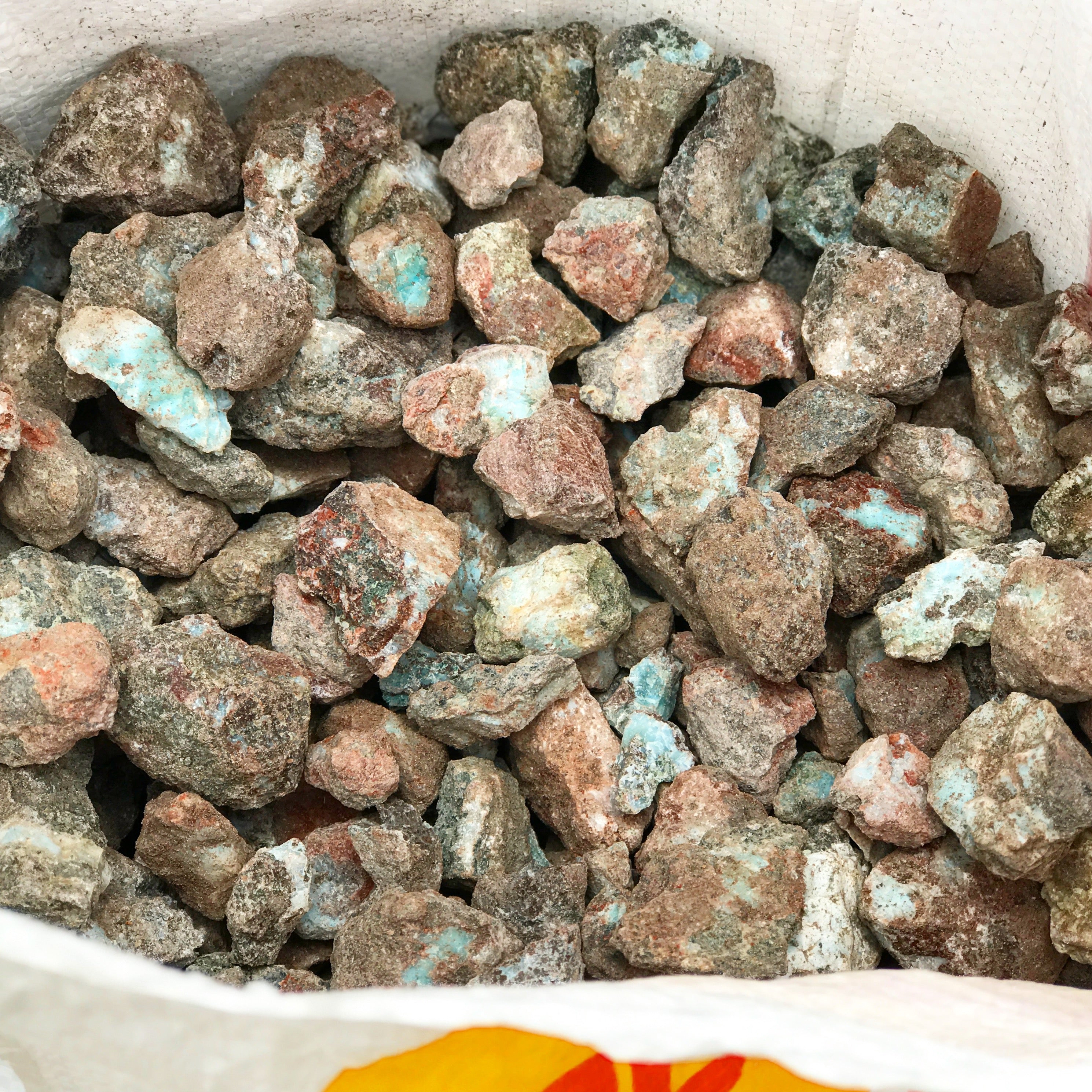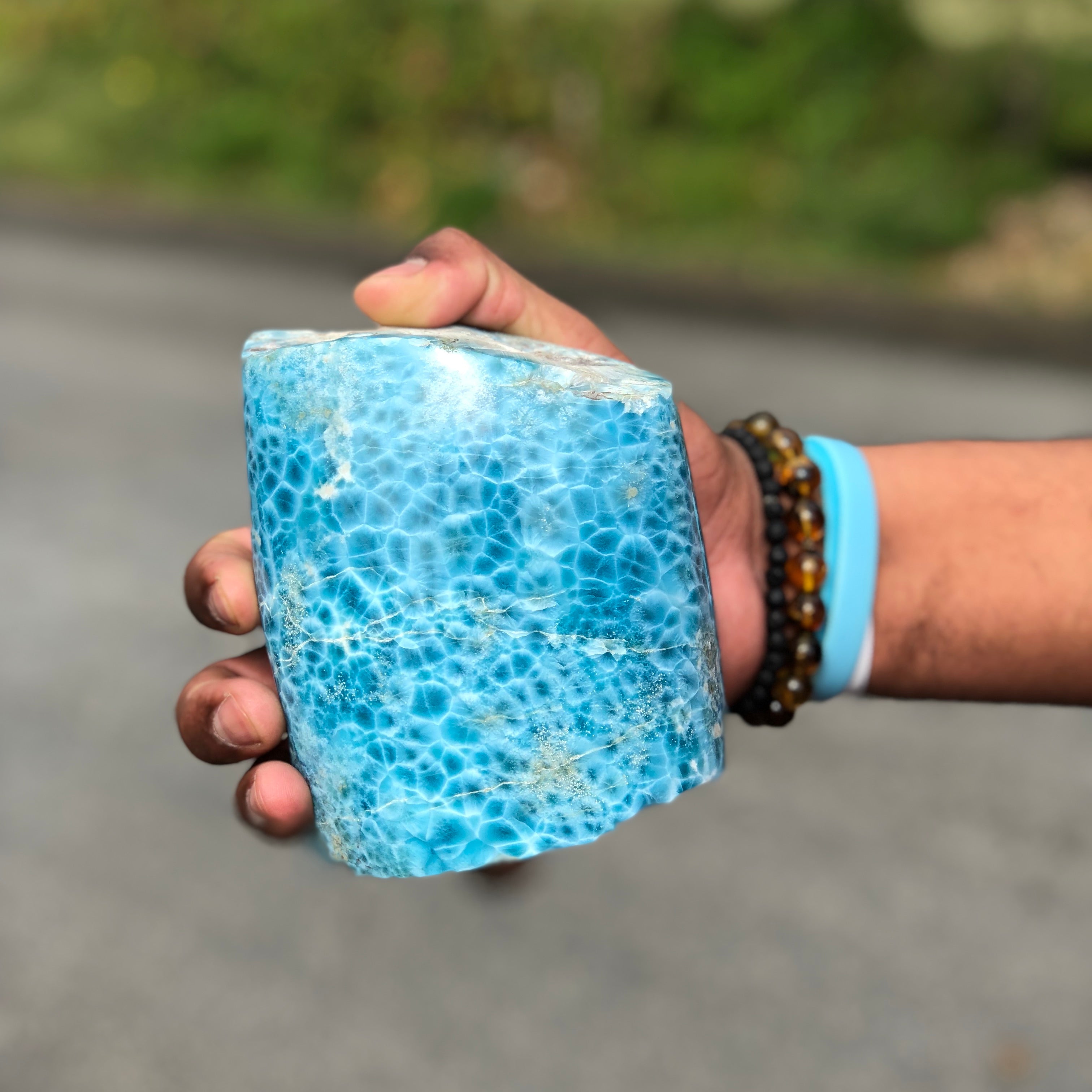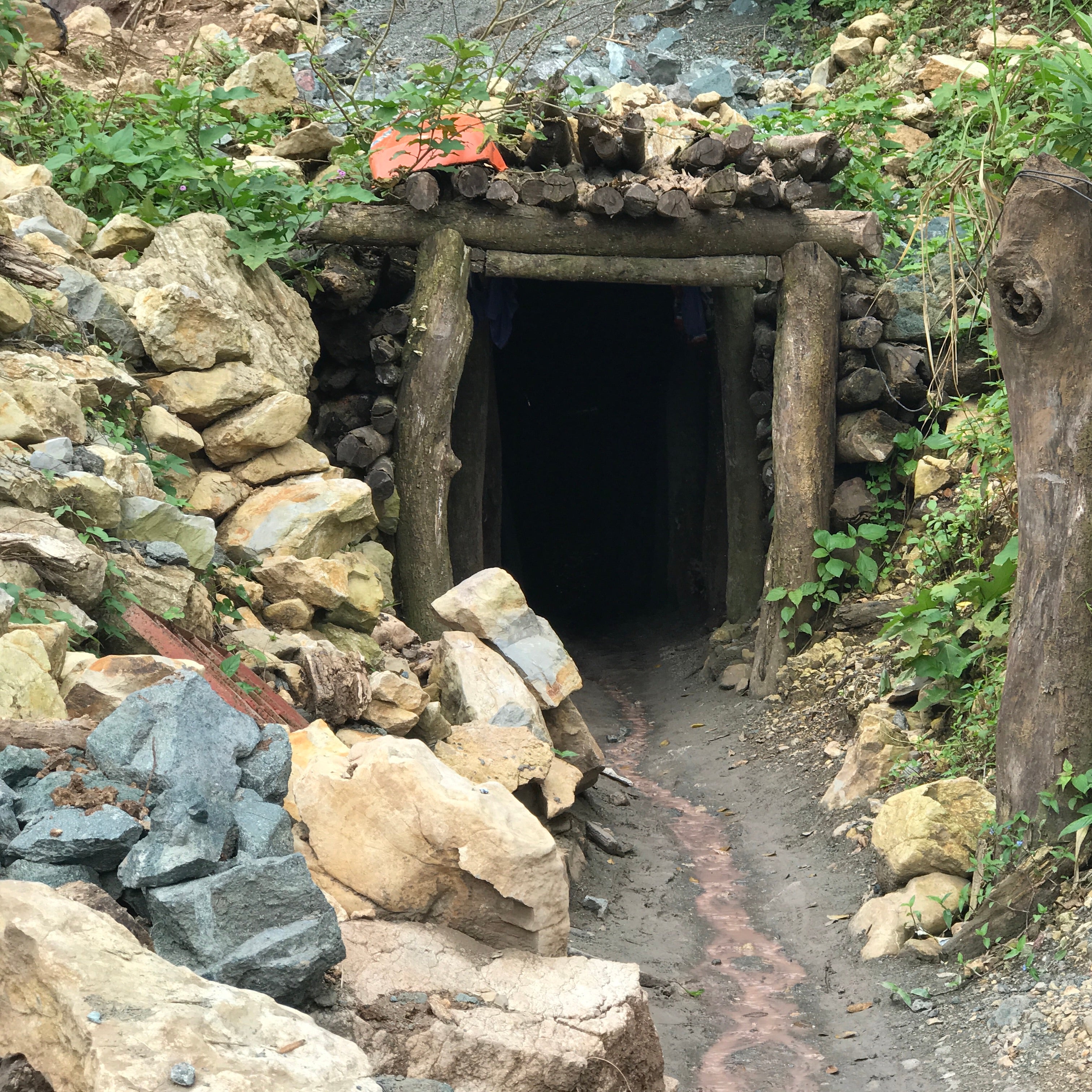Larimar
Larimar is a rare and exotic gemstone. Found in an old volcano in the southwest mountain region of the Dominican Republic, known as Barahona. It is the only known place on earth where this gemstone is found.
The Discovery
It was initially discovered in the early 1900s by a Spanish Priest, but never mined. In 1974, Norman Rilling, a member of the US Peace Corps, and Miguel Méndez, a Dominican found pieces of Larimar on the beach. Before Mendez and Rilling, local inhabitants of the region and their ancestors had long been aware of the stone. Early theories suggested Larimar was produced by the Sea, later by the earth's volcanic movements. Island legends said that the stones could be collected easily on the beach. Mendez and Rilling in 1974 would follow a river upstream and find sources of the blue stone.
The Name
The name of Larimar was created by Miguel Méndez, who combined his daughter's name Larissa with the Spanish word for sea, Mar. Larimar is most commonly found in blue, but can also be found in red, black, white and green. The colorations of Larimar range limitless and each piece is entirely unique with its patterns, texture and colors.
The Stone
Larimar is a type of pectolite, or a rock composed largely of pectolite, an acid silicate hydrate of calcium and sodium. Pectolite is found in many locations, but Larimar has a unique volcanic blue coloration, which is the result of copper substitution for calcium. Miocene volcanic rocks, andesites and basalts, erupted within the limestones of the south coast of the island. These rocks contained cavities or vugs which were later filled with a variety of minerals, including the blue pectolite. These pectolite cavity fillings are a secondary occurrence within the volcanic flows, dikes, and plugs. When these rocks erode, the pectolite fillings are carried down the slope to end up in the alluvium and the beach gravels. The Bahoruco River carried the pectolite-bearing sediments to the sea. The tumbling action along the stream bed provided the natural polishing to the blue Larimar, which makes them stand out in contract to the dark gravels of the stream bed.
The Significance
Larimar is also called the Atlantis Stone. A spiritual master who lived in Trinidad and Tobago founded many of the Yoga centers around the world had once claimed that some islands in the Caribbean including the Dominican Republic were part of the lost continent of Atlantis. He went further to state that upon one of those islands, a blue stone with healing powers would be found; a description that only corresponds to the stone of Larimar.
This beautiful blue stone is considered by some as a healing stone, increasing speech and communication skills and supporting the body's natural healing process. Larimar is believed to be a highly spiritual stone that targets all of the chakras from the heart chakra through to the crown chakra. It is believed to have a distinct vibration that aids you to communicate with clarity, and because of its heart based energy it is believed to help you to speak of your emotions. It is also believed to help dissolve emotional barriers and to release stored negative emotions such as angry thoughts, remembered pain and other emotions that are not benefiting you.
The Mines
Over the years the mines have remained within a small square radius at the end of a small trail that winds up the mountains for about an hour. To this day the miners still use primitive tools such as picks, shovels and wheelbarrows to create the mine shafts. Modern day items are used, such as electricity for air, light and electronic equipment for removing large pieces of volcanic rock. The mines are privately owned and governed by a COOP who have worked at the mines since they were children with their own families. The creation of shafts is organic and unorganized, which raises concern for the future of this gemstone and for the safety of the miners themselves. The quantity of Larimar left in the mines is unknown, which makes the supply of Larimar rare.
Subscribe to our emails
Be the first to know about new collections and exclusive offers.
















